Vida Salvaje en Bosque del Cabo
Bosque del Cabo es principalmente un hotel de naturaleza, y tenemos una increíble variedad de vida salvaje viviendo y visitando nuestra reserve natural. Bosque es uno de los mejores lugares en Costa Rica, y hasta en todo Centroamérica, para ver bosques y vida salvaje. La gran selva de Bosque alberga y comparte a sus ojos la inmensamente rica biodiversidad de la Península de Osa, considerada una de las regiones tropicales más importantes, prístinas y vitales de Centroamérica. Hay grandes poblaciones de animales en peligro de extinción, como la lapa roja y el mono ardilla, así como categorías sorprendentemente diversas de animales y plantas endémicos, tales como el sargento y la Ranita Venenosa del Golfo Dulce. Por supuesto que los grupos de monos aulladores y cariblancos, tucanes, loras, pizotes, guatusas y chanchos de monte se encuentran frecuentemente, y se han visto hasta tolomucos y dantas. La Osa es hogar de 5 especies de felinos salvajes, y varias de estas especies, como el puma, el jaguarundi y el ocelote, se ven ocasionalmente por nuestros huéspedes.
Mientras otras áreas del mundo, y hasta de Costa Rica, están siendo deforestadas y desarrolladas sin orden, La Osa mantiene aún mucho terreno forestal, rodeado de hermosos hábitats marinos y rústicas playas. En Bosque tratamos de crear un ambiente confortable y accesible, en donde nuestros huéspedes puedan aprovechar realmente de la facilidad de ver la impresionante flora y fauna de esta parte tan especial del mundo.
Comentarios de expertos que han visitado Bosque del Cabo
Adrian Forsyth
Roy Toft
Philip Davison
Nicole Gibson
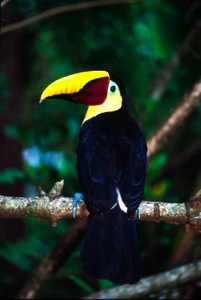
The wildlife at Bosque are relatively unafraid of human observers making observation an easy and non-disruptive activity. There are plenty of rainforest lodges in Costa Rica. Few are set in such a spectacular setting where the forest primeval descends right to a wilderness coast. During the wet season thousands of olive ridley sea turtles nest along this section of coastline.
All four kinds monkeys that live in Costa Rica, the white-faced capuchin, mantled howler, Central American spider and squirrel monkeys are easily seen. I have often seen all 4 species in a single morning’s walk at Bosque del Cabo.
The 5 wild cat species found in Costa Rica have been recorded on and around Bosque including puma, jaguar, ocelots, margays and jagarundi. Tapir, white-lipped and collared peccary frequent the area. These animals are normally rare outside of national parks.
Three-toed sloths are common around Bosque. However, sighting this cryptic animal is often difficult. The upper sections of Cecropia trees along the road are the best places for sloth spotting. But where ever you walk on Bosque you are certain to see wild life that is beautiful, interesting and accessible.
Adrian Forsyth
Author (Tropical Nature, How Monkeys Make Chocolate, Portraits of the Rainforest, etc.)
President, Friends of the Osa
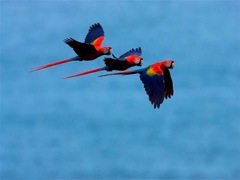

Bosque del Cabo has been my home in the Osa ever since that first trip in 1990. Phil had just opened the lodge….two thatch roofed cabinas and a small central restaurant where Phil did all the cooking. Even without electricity, Phil provided wonderful meals, quaint cabins, cold beer, and most of all…..a location on the tip of the peninsula that was and still is unmatched in all of Costa Rica. Wonderful people, beautiful

The most interesting thing about Bosque del Cabo is that it just keeps getting better. Because Phil and Kim continue to purchase and protect forest buffering the lodge, wildlife is more plentiful and easier to see than ever before. Their conservation and low impact philosophy has also motivated other establishments to become better stewards of this amazing place.
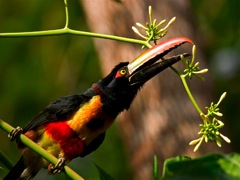
Thank you Phil and Kim for what you have done, and for treating me like family and my workshop participants like honored guests!
"Roy Toft; professional wildlife photographer, published in National Geographic, Audubon, Wildlife Photographer, Coastal Living, etc."
All photos on this page courtesy and copyright of Roy Toft.

For this reason I would recommend Bosque del Cabo to anyone having an interest, casual or professional, in natural history.

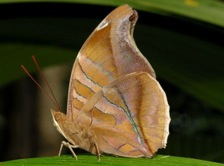
Bosque del Cabo’s trail system gives ample opportunity to hike through a wide variety of habitats; primary and secondary forest, open gardens and coastal areas. I enjoy spending a great deal of my time walking the trails, recording and photographing the wildlife around me.
What adds to the whole experience is that the hotel itself is so welcoming and restful between activities.
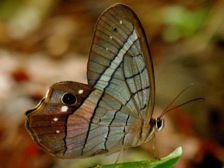
Philip Davison, Tropical Ecologist.
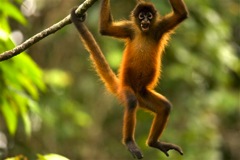
Bosque del Cabo is a superb spot for monkey watching, perhaps the best in Central America. There are four different species of non-human primates, or monkeys, that live in the Osa's forests: they are the white-faced capuchin (Cebus capucinus), mantled howler (Alouatta palliata), central american spider (Ateles geoffroyi), and squirrel (Saimiri oerstedii). Generally, you will find howler, squirrel and capuchin monkeys in primary and secondary forests while the largest Osa monkeys, the spider monkeys, spend most of their time in primary forest. All four species are abundant at Bosque and relatively habituated to human observers. You can often sit on the porch of your cabin and watch monkeys behaving in a completely natural manner.
Many other large, spectacular mammals can also be spotted on the Bosque del Cabo property and surrounding areas. These include the tayra (Eira barbara) a very large bi-colored weasel, white-nosed coati (Nasua narica), collared ant-eater (Tamandua mexicana), agoutis (Dasyprocta punctata) and pacas (Agouti paca). Pumas (Puma concolor) have been seen from time to time within a short walk of Bosque, as have jaguars (Panthera onca). Three-toed sloths (Bradypus variegatus) are quite common around Bosque, however, sighting this visually elusive, strikingly slow-moving and muscular animal is often difficult. If you are intent on seeing a sloth, our best recommendation is that you scour the upper sections of trees, especially Cecropia trees along the road.
Hikers, biologists, and locals find that each experience in the forest is unique and always educational. One day a discovery could be an infant spider monkey with its mother, learning how to pluck fruits from a tree, or an ant-eater moving through the forest canopy, branch to branch (in search of a termite nest) 100 feet above the forest floor
Nicole Gibson; Research Collaborator; Department of Entomology; Smithsonian Institution


